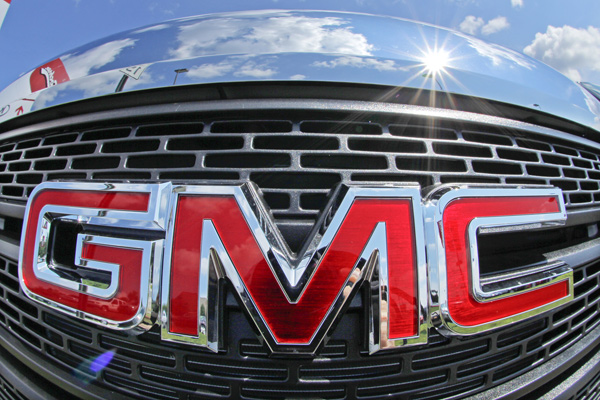GM’s debt returned to investment grade General Motors UPGRADE


The grill of a 2013 GMC Terrain AWD SLT-1 is seen in Pittsburgh.
Associated Press
Detroit
A key ratings agency has restored General Motors’ debt to investment-grade status, eight years after the company lost the rating as it spiraled toward bankruptcy protection.
The upgrade came Monday, shortly after GM announced plans to buy back high- interest preferred stock from a union retiree health care trust fund for $3.2 billion.
Moody’s Investors Service raised GM’s corporate debt from Ba1, which is junk status, to Baa3, the lowest investment-grade rating. Two other ratings agencies, Fitch and Standard & Poors, still have GM at junk status. The upgrade likely means GM will get lower interest rates when it borrows money in the future.
GM’s credit ratings have been in junk territory since 2005, when the company was struggling with huge debts, falling U.S. market share and factories cranking out more cars than people were buying. GM closed plants and erased much of its debt with a 2009 bankruptcy. It has made an annual profit every year since 2010.
In August, Fitch raised GM’s outlook to positive from stable and said it could upgrade GM within two years. Standard and Poor’s also raised GM’s outlook to positive earlier this month.
“Good things happen when you build great cars and trucks and deliver strong financial results,” GM CEO Dan Akerson said in a statement.
Moody’s said in a statement that it based the upgrade on expectations that GM will gain sales with new products in a healthy U.S. market, and because of its solid position in China.
Morningstar analyst David Whiston called the upgrade “another step on the mountain” in GM’s comeback.
GM shares rose 11 cents after the news to $36.94, a little less than a dollar short of the stock’s one-year high. The stock is up 28 percent so far this year.
Also Monday, the company announced that it would buy back 120 million preferred shares from a United Auto Workers retiree health care trust for $27 per share. GM will finance the buyback through the sale of senior unsecured notes with five-, 10- or 30-year terms. The debt offering is expected to take place on or before Monday.
GM pays about $620 million in interest per year on the preferred shares. It could get interest rates from 4 percent to 7 percent on the new debt, according to analysts.
Moody’s rated the new bond offering at junk status, one notch below investment grade. That’s mainly because a GM holding company is selling the debt rather than the operating company, meaning operating company creditors would be repaid first if GM ran into financial trouble, said Moody’s Senior Vice President Bruce Clark. The new notes are unsecured and would be repaid after considerable liabilities including GM’s $28 billion unfunded pension liability, Moody’s said.
The health care trust currently holds 260 million GM preferred shares, while the Canadian government has 16 million. The company can buy back the shares for $25 each at the end of next year. It negotiated with the trust to buy some of the shares early, at a $2 premium.
 43
43
